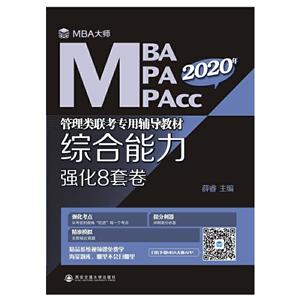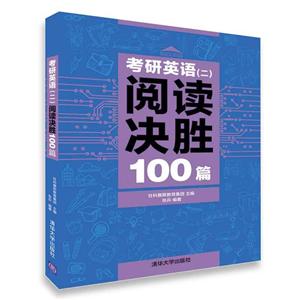应用高分子材料

|
应用高分子材料作者:王者辉 开 本:32开 书号ISBN:9787122265944 定价: 出版时间:2016-08-01 出版社:化学工业出版社 |
应用高分子材料 本书特色
本书以高分子材料的结构·性能·应用为主线,联系其他材料科学,理论结合实际,介绍了各类高分子材料的基础知识和相关的加工成型方法。全书共分6章,高分子材料科学概述、塑料与增塑剂、高分子材料在汽车工业中的应用、医用高分子材料、高分子材料加工技术、纳米材料与高分子材料的新发展,此外,书末附有高分子材料专业词汇注释。本书阐述了高分子材料的基本理论,同时注重高分子材料科学技术知识的实用性。 《applied polymer materials(应用高分子材料)》可供从事高分子材料专业及其他材料科学的科研和生产技术人员使用。
应用高分子材料 内容简介
一本高分子科学方向的专著,带您遨游应用高分子科学世界里面的奥秘。它深入你的生活,解密你所不知到的材料世界。 通过本书阅读,可掌握高分子材料科学的基本内容,了解高分子材料的基本结构、性质、用途、合成制造和加工方法,及其在交通运输、医药为什、建筑材料、包装领域的应用,更介绍了纳米技术在高分子材料中的应用。
应用高分子材料 目录
chapter 1 fundamentals of polymer science / 11.1 introduction / 11.1.1 writing formulas for polymeric macromolecules / 11.1.2 properties of macromolecules / 31.1.3 three factors that influence the degree of crystallinity / 41.1.4 regio and stereo isomerization in macromolecules / 61.2 synthesis of addition polymers / 71.2.1 radical chain-growth polymerization / 81.2.2 cationic chain-growth polymerization / 101.2.3 anionic chain-growth polymerization / 101.2.4 ziegler-natta catalytic polymerization / 111.3 copolymers / 121.3.1 addition copolymerization / 121.3.2 block copolymerization / 131.4 condensation polymers / 131.4.1 characteristics of condensation polymers / 131.4.2 thermosetting vs. thermoplastic polymers / 161.5 structure-property relationship / 171.5.1 linearity, branching and networking / 171.5.2 molar cohesion, polarity and crystallinity / 181.5.3 role of molecular symmetry / 181.5.4 role of chemical modification in effecting internal plasticization / 191.5.5 copolymerization and internal plasticization / 191.5.6 effect of inclusion of flexible inter-unit linkages and rigid bulky groups / 191.5.7 effect of temperature / 211.5.8 survey of deformation patterns in the amorphous state / 211.5.9 transitions and rubbery and flow regions / 221.5.10 property demand and polymer applications / 231.6 the age of plastics / 251.7 the law of unintended consequences / 261.8 recycling and disposal / 271.9 biodegradable polymers / 29chapter 2 plastics and plasticizers / 332.1 plasticizers: an introduction / 332.2 early plasticizers / 342.3 theory: mechanism of plasticizer effect on the polymer / 342.4 phthalate plasticizers / 352.5 the phthalate plasticizer market / 352.6 health issues in the use of phthalate plasticizers: are they safe? / 372.6.1 evidence? / 382.6.2 what's being done in the meantime? / 392.7 health or hype? / 392.8 plastics in packaging / 402.8.1 introduction / 402.8.2 types of plastics used in packaging / 422.8.3 plastic vs. the alternatives / 482.8.4 reusing plastic packaging / 492.8.5 recycling plastic packaging / 492.8.6 conclusion / 51chapter 3 polymer materials used in automobiles / 533.1 introduction / 533.2 uses of polymer materials in an automobile / 533.2.1 fuel tank / 533.2.2 exterior / 553.2.3 interior / 583.2.4 polymers in car engine manifolds and power trains / 593.2.5 conclusion / 603.3 car tires / 613.3.1 introduction / 613.3.2 tire production / 623.3.3 the chemistry of tires / 653.3.4 brass wire adhesion / 673.3.5 disposal and recycling of used tires / 693.3.6 tread separation problem overview / 693.3.7 lawsuit against firestone and ford motor co. / 713.3.8 conclusion / 723.4 kapton(r) wiring / 723.4.1 introduction / 723.4.2 properties of kapton(r) / 743.4.3 uses of kapton(r) / 743.4.4 degradation of kapton(r) and other polymers / 763.4.5 insulation requirements for wires / 77chapter 4 polymer materials in medicine / 794.1 introduction / 794.2 polymer materials in medicine / 804.2.1 a brief history of polymer materials in medicine / 804.2.2 cellophane / 814.2.3 pga, pla, and plga / 824.2.4 polydimethyl siloxane (pdms) / 834.2.5 polyethylene and poly (methyl methacrylate) (pmma) / 844.2.6 polytetrafluoroethylene (ptfe) / 844.2.7 polyurethane / 854.2.8 conclusion / 864.3 contact lens polymers / 864.3.1 the history of contact lenses / 874.3.2 how contact lenses work / 874.3.3 why do people wear contact lenses / 884.3.4 biocompatibility and contact lens comfort / 894.3.5 manufacturing of contact lenses / 904.3.6 hard contact lenses / 914.3.7 soft contact lenses / 934.3.8 problems caused by contact lens use / 944.3.9 conclusion / 954.4 silicone implants / 954.4.1 history / 964.4.2 silicone implants / 964.4.3 advantages / 974.4.4 disadvantages / 974.4.5 concerns / 994.4.6 companies involved in the production of silicone breast implants / 1004.5 tablet coating / 1004.5.1 drug release paterns / 1014.5.2 types of coatings / 1034.5.3 polymers used for film-coatings (film formers) / 1044.5.4 equipment / 1064.5.5 the coating process / 1094.5.6 spray variables / 1124.5.7 formulation of polymeric coatings / 116chapter 5 polymer processing / 1205.1 extrusion / 1205.2 film blowing / 1215.3 sheet thermoforming / 1225.3.1 thin-gauge and heavy-gauge (thick) thermoforming / 1245.3.2 engineering / 1245.4 blow molding / 1255.4.1 history of blow molding / 1265.4.2 typologies of blow molding / 1265.5 compression molding / 1285.6 transfer molding / 1305.7 injection molding / 1315.7.1 injection molding process / 1335.7.2 methodology of unit process life cycle inventory model (uplci) / 1365.7.3 injection molding process energy characteristics / 1365.7.4 parameters effecting the energy required for brake forming / 1375.7.5 method of quantification for mass loss / 1425.7.6 manufacturers reference data / 1445.7.7 problems encountered in injection molding / 1455.7.8 summary / 1455.8 paints and coatings / 1465.8.1 paint / 1465.8.2 clear finishes / 1515.8.3 other coatings / 1525.8.4 surface cleaning / 1535.8.5 superior performance aerospace coatings / 1555.9 developments in polymer coatings for dipped goods / 1575.9.1 key requirements to consider / 1595.9.2 polymer coating choices / 1595.9.3 manufacturing considerations / 1615.9.4 simple tests of coating effectiveness / 1625.9.5 latex clothing / 1635.10 choosing polymers for centrifuges / 1655.10.1 life before polymers / 1655.10.2 types of polymers / 1665.10.3 jar testing, mixing small quantities of polymers / 1695.10.4 polymer trials / 177chapter 6 nanotechnology in polymer materials / 1816.1 a unit of length: a nanometer--the millionth part of a millimeter / 1816.1.1 small particles, large surface areas / 1826.1.2 does nano equal new? / 1836.1.3 move into the nano era / 1846.1.4 nanotechnology at an overview / 1856.1.5 value-adding chain of nanomaterials / 1866.1.6 the research verbund / 1866.1.7 nanoparticles offer protection from the sun / 1876.1.8 ideas for innovation from new business areas / 1886.1.9 multidisciplinary nature of nanotechnology / 1886.2 nanoparticles in megatons: wide-ranging applications for polymer dispersions / 1896.2.1 large production volume for aqueous polymer dispersions / 1906.2.2 water-like viscosity despite high solids content / 1906.2.3 four ways of creating diversity / 1916.2.4 the goal: high solids content and good processability / 1926.2.5 multiphase polymers / 1936.2.6 nanocomposites with different morphologies / 1946.2.7 major advance: dispersions containing butadiene / 1956.2.8 new catalysts for tactic polymers / 1966.2.9 virtually limitless range of applications / 1976.3 the "eyes and fingers" of nanotechnology: analysis leads the way to the nanocosm / 1986.3.1 atomic force microscopy: uphill and downhill in the nanoworld / 1996.3.2 nanoinstrumentation: tweezers, heaters and pipettes / 1996.3.3 computer simulations are often helpful / 2016.3.4 basf has its own ways to analyze nanoparticles / 2026.3.5 particle collider data / 2026.3.6 a special variation on tem: heavy atoms in the spotlight / 2046.3.7 light, raman scattering and fluorescence / 2066.3.8 nanoanalysis: at the forefront of chemical nanotechnology / 2086.4 nanostructures through self-organization: color without dyes, taking a lead from nature / 2086.4.1 the three-dimensional photonic crystal / 2106.4.2 matrix of polymer material / 2106.4.3 crystallites of polystyrene particles under a scanning laser microscope / 2136.4.4 using particle size to achieve the entire range of colors / 2136.4.5 the one-dimensional photonic crystal / 2146.5 nanostructures through self-organization: rubber laser with variable optical properties / 2156.6 nanostructures with the lotus effect: building blocks for superhydrophobic coatings / 2196.6.1 dual structure fights dirt / 2206.6.2 water droplets have nothing to hold on to / 2216.6.3 lotus spray in the pipeline / 2226.6.4 much research needs to be done / 2246.7 nanotubes: small tubes with great potential / 2246.7.1 introduction / 2246.7.2 synthesis and purification of swcnts / 2266.7.3 structural and physical properties / 2266.7.4 defect-group chemistry / 2286.7.5 covalent sidewall functionalization / 2286.7.6 noncovalent exohedral functionalization / 2306.7.7 endohedral functionalization / 2316.8 sinking one's teeth into nanotechnology: hydroxyapatite and tooth repair / 2316.8.1 big market for dental care products / 2326.8.2 fundamental technology shift in dental care / 2336.8.3 nanoparticles with a huge surface area / 2346.8.4 extensive know-how in the bottom-up process / 2346.8.5 self-organization in film formation / 2356.8.6 on the road to marketability / 2366.9 nanocubes as hydrogen storage units: the "battery of tomorrow" for laptops and cell phones / 2366.9.1 hydrogen instead of methanol / 2376.9.2 the next big idea: metal-organic frameworks / 2386.9.3 encouraging storage results / 2396.9.4 the advantage of physisorption / 2406.9.5 energy densities compared / 2416.9.6 great prospects for specific applications / 2426.9.7 helpful know-how from catalyst production / 2436.10 nanoscale tree molecules: dendrimers for new printing systems and car paints / 2436.10.1 protecting group techniques for tree growth / 2446.10.2 polymer building blocks / 2456.10.3 hyperbranched polymers give new "tree species" / 2476.10.4 synthesis control by reactive groups / 2486.10.5 making their mark on plastic / 2496.10.6 automotive coatings: scratch-resistant yet flexible / 2506.10.7 parquet floors: keep your stilettos on / 2516.11 economic perspectives of nanotechnology: enormous markets for tiny particles / 2526.11.1 nanotechnology as enabling technology / 2526.11.2 market expectations: euphoria or reality? / 2546.11.3 extreme differences between market estimates / 2546.11.4 nanoparticles: large surface-to-volume ratio / 2556.11.5 high consumption in electronics and information technology / 2566.11.6 major growth expected from start-ups / 2576.11.7 nanocomposites: innovative fillers for plastics / 2576.11.8 nanocoatings: big business in germany / 2596.11.9 conclusion and outlook: the bottom line / 2606.12 from university research to the chemical industry: how much hype is there in nanotechnology? / 2606.12.1 nanosciences at the universities and in research networks / 2626.12.2 an intermezzo: how much hype is there in nanotechnology? / 2656.12.3 which areas of nanotechnology will be successful in the short and medium term? / 2666.13 a great future for tiny particles / 2726.13.1 nanotechnology also has a major impact on basf's traditional business areas / 2726.13.2 opening up new markets with nanotechnology / 2736.13.3 nanotechnology means learning from nature / 2736.13.4 open to new impulses for innovations through cooperative ventures / 274appendix 1 nanoanalytical methods at basf (excerpt) / 276appendix 2 nanoanalysis at basf (excerpt) / 277appendix 3 glossary of basic terms in polymer science / 278appendix 4 conversation tables / 295
教材 研究生/本科/专科教材
在线阅读
- 最新内容
- 相关内容
- 网友推荐
- 图文推荐
上一篇:会计基础实务操作教程
下一篇:旅行社经营管理
零零教育社区:论坛热帖子
| [高考] 2022 西安电子科技大学《软件工程》大作业答案 (2022-04-25) |
| [家长教育] 孩子为什么会和父母感情疏离? (2019-07-14) |
| [教师分享] 给远方姐姐的一封信 (2018-11-07) |
| [教师分享] 伸缩门 (2018-11-07) |
| [教师分享] 回家乡 (2018-11-07) |
| [教师分享] 是风味也是人间 (2018-11-07) |
| [教师分享] 一句格言的启示 (2018-11-07) |
| [教师分享] 无规矩不成方圆 (2018-11-07) |
| [教师分享] 第十届全国教育名家论坛有感(二) (2018-11-07) |
| [教师分享] 贪玩的小狗 (2018-11-07) |






